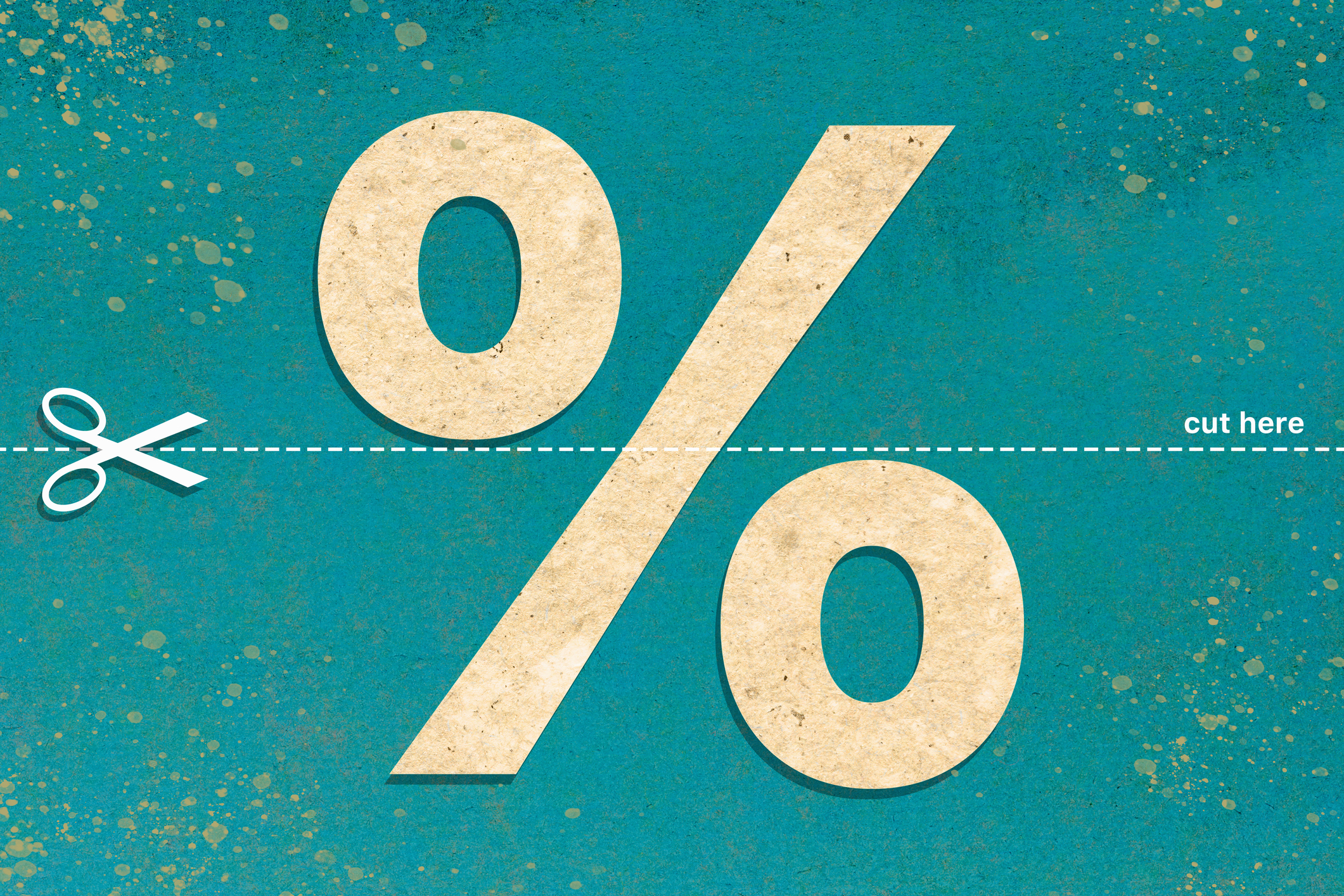Real Estate Investing Is Down But Not Out
Real estate investing has gone through the wringer in recent years, but tactical investors can find solid income-building opportunities at a discount.


The lifeblood of real estate is debt, and the Federal Reserve has made borrowing a lot more expensive by raising interest rates five full percentage points between March 2022 and July 2023.
Households owe $12 trillion on their mortgages, and businesses owe $5 trillion in commercial real estate loans. Both sectors are being affected by higher rates and by fallout from COVID. Lately, shares have rallied, but in many cases I find prices attractively low.
First, consider residential property. It's no surprise that existing home sales are expected to fall 16% this year. What's surprising is that new-home sales have held up well, as have prices, which are up about 4%, on average, over the past year. The economy has continued to perk along despite higher rates, with unemployment near record lows. And the COVID experience gave buyers an incentive to own larger homes, with space for offices and recreation.
From just $107.88 $24.99 for Kiplinger Personal Finance
Become a smarter, better informed investor. Subscribe from just $107.88 $24.99, plus get up to 4 Special Issues

Sign up for Kiplinger’s Free Newsletters
Profit and prosper with the best of expert advice on investing, taxes, retirement, personal finance and more - straight to your e-mail.
Profit and prosper with the best of expert advice - straight to your e-mail.
After sharp declines at the beginning of the COVID pandemic, homebuilding stocks have rallied. Meritage Homes (MTH, $149) and NVR (NVR, $6,306), which I recommended previously, have since hit all-time highs. My third recommendation, KB Home (KBH, $54), is up 31%. I still like all three as long-term investments, but they are no longer the bargains they were. (Stocks I like are in bold; returns are as of July 31.)
Commercial real estate has been hit by a double whammy: higher interest rates combined with new patterns of work and shopping as a result of COVID. For many businesses with little public contact, a schedule of three days in the office and two at home is becoming the norm. Whether remote work will persist is unknown, but I am a skeptic. Meanwhile, brick-and-mortar retailers are staging an impressive comeback. My guess is that America will continue to revert to the pre-COVID mean.
Investors and analysts who soured on commercial real estate over the past two years may have gone overboard in their negativity. Vornado Realty (VNO, $22), for one, which owns 20 million square feet of office properties, concentrated mainly in New York, jumped 66% over the past two months. New York has been left for dead many times, but it keeps resurrecting.
Los Angeles–based Kilroy Realty (KRC, $36), which puts heavy emphasis on being environmentally friendly, rose 34%. Although shares of commercial developers have risen, prices remain far below pre-COVID highs, thus offering good value. Vornado is down two-thirds from its 2020 peak; Boston Properties (BXP, $67) and Kilroy are down more than half.
Challenges remain in real estate investing
There's no doubt that many of these companies are having problems. In April, Vornado announced it was suspending its dividend through the end of 2023. But it also said it would buy back $200 million in shares. Boston Properties – the largest publicly traded developer, owner and manager of U.S. workspace – has been suffering lower earnings but is maintaining its payout, for a yield of 5.9%.
Vacancy rates are high nationally – an average of 16.1%, compared with 11.5% three years ago. But there are haves and have-nots. A powerful trend is that large tenants are moving from less-attractive buildings to newer, Class A properties when their leases are up. Beneficiaries are real estate companies with better office space or access to the capital needed for major renovations or new construction. A good example is Atlanta-based Cousins Properties (CUZ, $24), which owns mostly Class A buildings in Sun Belt cities and has a dividend yield of 5.3%. Shares are up more than 20% in the past two months but remain far below their pre-COVID high.
The bigger, more stable firms have another advantage. Nearly all income-producing real estate companies trade as real estate investment trusts (REITs). By law, REITs have to pay out at least 90% of their earnings (most pay 100%) to shareholders in the form of dividends. Because REITs retain only a tiny proportion of their earnings, they need to raise debt or equity to grow – a problem during uncertain times. (Also note that REITs don't pay dividends nearly as consistently as conventional corporations do.)
Retail REITs create opportunities in real estate investing
Retail REITs, which lease property to retailers, have managed higher interest rates and changing shopping habits with varying success. Simon Property Group (SPG), the largest in the sector, with more than 232 properties (mainly malls) in the U.S. and Europe, recently took a big hit when its quarterly funds from operations (a metric similar to earnings for a conventional business) failed to meet expectations. Simon is down by about half from its 2016 high, and I would stay away.
By contrast, Tanger Factory Outlet Centers (SKT, $23), whose shares have more than quadrupled since 2020, may be the future of brick-and-mortar retailing. The company owns or manages 36 open-air shopping centers, featuring brand-name stores selling goods at a discount. Tanger's FFO per share for the quarter ending June 30 was 50% higher than the same period a year earlier.
I especially like REITs such as Tanger that have niches that provide some protection during downturns. Another example is Alexandria Real Estate Equities (ARE, $126), which leases Class A space to life-sciences and advanced-technology companies, mainly in innovation centers including greater Boston, the San Francisco area, and the Research Triangle area of North Carolina. The REIT has a strong financial base, but it has been caught in the same undertow as other real estate stocks – unfairly, I believe. Shares, which yield 4.1%, are down by more than 40% since December 2021.
Also consider Host Hotels & Resorts (HST, $18), the largest lodging REIT. Host owns 95 properties and partners with top brands, such as Four Seasons and Ritz-Carlton. High-end hotels have staged a strong recovery as COVID has subsided, but Host shares have been largely flat. I also like CubeSmart (CUBE, $43), one of the three largest owners of self-storage properties. The company, which yields 4.6%, is in a business that benefits from its customers' willingness to endure regular rate increases, thanks to inertia and the unappetizing prospect of moving their belongings elsewhere.
Finally, a word about two of my longtime favorites that own vast stretches of land: St. Joe (JOE, $63), in northwest Florida, and Tejon Ranch (TRC, $18), in the high desert of California. St. Joe has been a much better performer, quadrupling over the past five years, but Tejon, owner of some 270,000 acres only an hour north of Los Angeles, has substantial promise.
This is a delicate time for real estate investing. There are risks. Interest rates seem to have leveled off, but they could still rise, and the economy could falter. Some companies, especially in the commercial sector, will probably fail. But overall, share prices are depressed, many of the stocks offer good income opportunities, and the sector provides a hedge against inflation – a good combination.
James K. Glassman chairs Glassman Advisory, a public-affairs consulting firm. He does not write about his clients. His most recent book is Safety Net: The Strategy for De-Risking Your Investments in a Time of Turbulence. Of the stocks mentioned here he owns NVR. You can contact him at JKGlassman@gmail.com.
Note: This item first appeared in Kiplinger's Personal Finance Magazine, a monthly, trustworthy source of advice and guidance. Subscribe to help you make more money and keep more of the money you make here.
Related content
Profit and prosper with the best of Kiplinger's advice on investing, taxes, retirement, personal finance and much more. Delivered daily. Enter your email in the box and click Sign Me Up.

-
 4 Great Tools to DIY Your Own Financial Plan
4 Great Tools to DIY Your Own Financial PlanSmart Savings Several tools picked out by Kiplinger that DIYers can use to make their own financial plan.
-
 The 7-Month Deadline That Sets Your Lifetime Medicare Premiums
The 7-Month Deadline That Sets Your Lifetime Medicare PremiumsUnderstanding Medicare enrollment is crucial, as missing deadlines can lead to permanent late enrollment penalties and gaps in coverage.
-
 Retirees Living in Portugal: You Need a Post-NHR Tax Strategy
Retirees Living in Portugal: You Need a Post-NHR Tax StrategyWhen your 10-year Non-Habitual Resident tax break ends, you could see your tax rate soar. Take steps to plan for this change well before the NHR window closes.
-
 What Investors May Face in the New Year: Interview
What Investors May Face in the New Year: InterviewKeith Lerner, the chief market strategist and chief investment officer for Truist Wealth, speaks with Kiplinger.
-
 What to Make of a Hot IPO Market
What to Make of a Hot IPO MarketThis year's crop of initial public offerings could be even dicier than usual because of a skew toward tech and crypto.
-
 How to Position Your Portfolio for Lower Interest Rates
How to Position Your Portfolio for Lower Interest RatesThe Federal Reserve is far from done with its rate-cutting regime. This is how investors can prepare.
-
 A JPMorgan Fund Holds Its Own Thanks to a Focus on Quality
A JPMorgan Fund Holds Its Own Thanks to a Focus on QualityDespite its defensive characteristics, the JPMorgan U.S. Quality Factor holds up in good times and in bad.
-
 What Fed Rate Cuts Mean For Fixed-Income Investors
What Fed Rate Cuts Mean For Fixed-Income InvestorsThe Fed's rate-cutting campaign has the fixed-income market set for an encore of Q4 2024.
-
 Why I Trust These Trillion-Dollar Stocks
Why I Trust These Trillion-Dollar StocksThe top-heavy nature of the S&P 500 should make any investor nervous, but there's still plenty to like in these trillion-dollar stocks.
-
 Hang in There With This Value Fund
Hang in There With This Value FundPatience is required for investors in the Dodge & Cox Stock Fund, but its long-term outperformance proves it's worth the wait.
-
 8 Dividend Funds to Consider Now
8 Dividend Funds to Consider NowThese dividend funds deliver a diversified portfolio of dividend stocks.